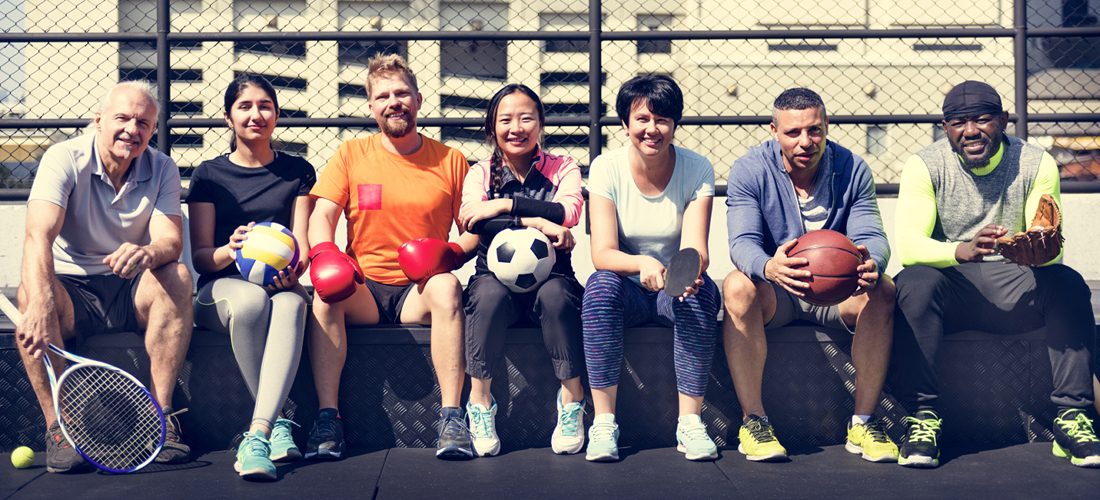Faster, stronger, further – success with sports medicine
For some years now, not only professional athletes have been taking advantage of the possibilities of modern sports medicine.
More and more ambitious amateur and amateur sportspeople are interested in healthy and sustainable training.
Interest in complementary and naturopathic treatments is growing.
Osteopathy has long had a firm place among athletes.
There is also a growing openness to traditional medicine.
Successful competitive athletes are increasingly gaining experience with osteopathy, acupuncture, kinesiology taping, cupping and sports hypnosis.
Complementary medicine and naturopathy open up a new world of possibilities for ambitious athletes and complement conventional sports medicine in a variety of ways.
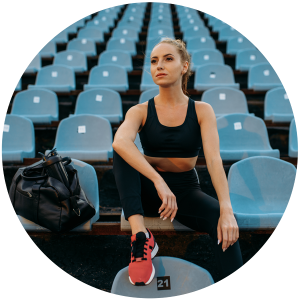
I have been rooted in organized sport and naturopathy for many years.
My experience in club work, as a trainer (B and C licenses, LSB, BSB, RSD) and in competition is the foundation of my sports medicine work.
In my practice, sports medicine has two main focuses: Trauma therapy and performance optimization (see below)
Trauma therapy
Losing is part of sport.
Unfortunately, so are accidents and injuries.
Injuries are often very traumatic for athletes, as they can have a lasting impact on their success.
In my practice, my concept of complex trauma therapy with a multidisciplinary approach has proven its worth.
The two basic building blocks of complex trauma therapy are manual therapy and physical, mental and social rehabilitation.
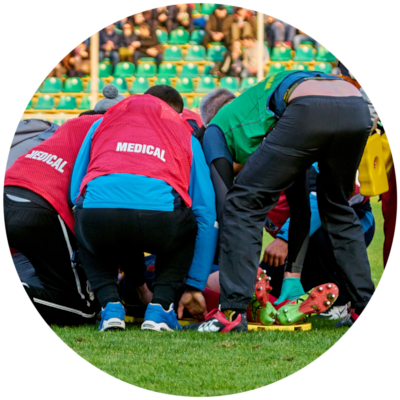
Manual therapy focuses on osteopathic techniques.
In particular, joints and muscles are treated.
The treatment of scars is also important to restore mobility.
Fasciae are not just a four-layered connective tissue for muscles and organs.
The immune and nervous systems are closely connected to the fasciae.
Fascia can therefore store information associated with strong emotions or injuries.
This results in restricted movement that cannot be remedied by manual therapy and training alone.
Special fascia therapy combines treatment at the psycho-emotional level of a trauma with the consequences of the physical injury.
Pain and inflammation management is closely linked to work on the fascial system.
Inflammation and edema are part of the healing process.
However, the self-healing powers can develop a dynamic that may delay the healing process.
Mental rehabilitation involves clarifying feelings of insufficiency caused by the trauma.
The mental focus on the trauma strongly influences motivation and beliefs.
Individual coaching techniques and hypnotherapy can shorten the path back to training if necessary.
The role of social media in sport is very important.
For the competitive athlete, it is not only important to get a place on the podium, but also to have a good reputation in social media.
It is often a decisive factor for club or sponsorship contracts and can have a lasting impact on an athlete’s career.
Social rehabilitation ties in with mental embodiment.
With empowerment and courage, you can find your way to the center of people if necessary.
Performance optimization
Faster, stronger, further – that is the essence of competition for many people.
In contrast to performance enhancement using banned substances or methods, performance optimization takes a different approach.
The aim is to maximize the athlete’s abilities and possibilities in training and competition using the body’s own resources.
In my practice, the strategy for optimizing performance during training involves first identifying factors that reduce performance.

Performance-reducing factors do not refer to injuries or degenerative changes.
Rather, it is about the “sand in the gears” that prevents perfect execution of the movement.
Performance-reducing factors in sport are in particular
Injuries
Even if an injury has healed, it should be checked whether myofascial chains show any abnormalities.
An osteopathic lesion can manifest itself, for example, through muscular or fascial tonus changes.
Unconscious influences also play a role.
In addition, scars can influence local mobility in the tissue.
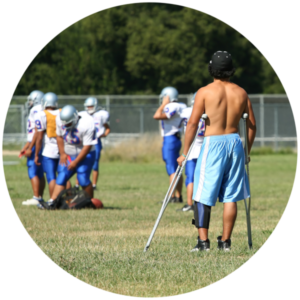
Movement patterns (kinesiology patterns)
Inefficient, ingrained posture and movement patterns can be found in almost all athletes.
Optimizing movement patterns not only offers performance potential, it also reduces possible pain and the risk of injury.

Mental defocusing
Fears, feelings of guilt, shame, feelings of insufficiency are some examples of mental “blockages”.
Mental factors are rarely consciously recognized.
These can be identified in a confidential conversation.

Motivation and beliefs
Questioning the motivation of competitive athletes is no easy task.
Nevertheless, questions should be clarified as to why and with what goal someone does (competitive) sport.
Negative beliefs, on the other hand, limit performance potential from the outset.
An excessive focus on mistakes in training and competition also influences beliefs.
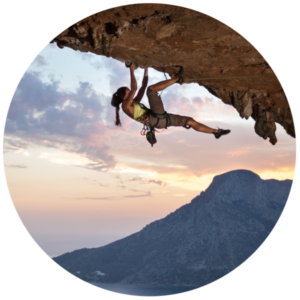
Training errors
Identifying training errors is the task of the coaching team.
Nevertheless, sports physicians very often find indications of unsuitable training stimuli, insufficient regeneration or functional restrictions in the musculoskeletal system, for example.

Stress
Negative stress, especially at work, significantly limits athletic performance.

Of course, not all of the aforementioned performance-reducing factors play a role in every case.
Which aspect is in need of intervention can be determined individually for an athlete or a team or is already part of my assignment.
Assessment and intervention
Once a field of work has been identified, professional sports medicine support includes a customized assessment.
Problems must be identified and goals defined for results-oriented work.
A systematic assessment of special skills enables the selection of suitable intervention options.
The transparent documentation of regular medical screenings enables athletes to evaluate their sports medical performance in the context of their training.
Taking into account the rights of my patients, coaches should also be able to evaluate relevant medical screenings.
In my practice, I have a range of testing and treatment options at my disposal that can be used depending on the field of work.
In addition to conventional medical diagnostics, I offer examination and treatment options based on complementary medicine and naturopathy.
Medical history
The personal interview to gather medically relevant data is by far the most important tool in my practice.
I place particular value on a client-centred dialogue, which is characterized by appreciation of the person, respect for personal beliefs, openness about goals and freedom from prejudice towards the client’s opinion.
Orthopaedic diagnostics
Orthopaedic diagnostics play a key role in sport, particularly in the case of structural damage to the musculoskeletal system.
A variety of test methods (such as neuro-musculoskeletal tests) provide a very differentiated picture of possible injuries to muscles, tendons and joints.
Osteopathy
Osteopathic diagnostics focus on restricted mobility or functionality in tissue structures.
Osteopathy works holistically, i.e. a person is viewed as a functional unit.
Diagnosis and treatment therefore not only relate to the musculoskeletal system – internal organs and the cranio-sacral system are also treated.
Related fields of work in my practice include the techniques of myofascial release, fascial distortion model (FDM) and applied kinesiology.
Acupuncture/TCM
Traditional Chinese medicine uses meridian theory to treat the energetic connections between functional circuits in the body.
An imbalance in the functional circuits can have an impact on physical or mental performance.
Acupuncture in particular is used to treat pain or restricted movement.
Metrics
Metric measurements are used for sales control, especially after injuries.
For example, force measurements using muscle function testing (MFP) as well as circumference and angle measurements are simple tools for therapy monitoring.
Screenings
Regular sport-specific tests are often part of training planning.
Carried out by trainers in the club, these tests can also provide conclusions about certain treatment processes.
Laboratory tests
The content and composition of the blood (and excretions) can provide information on whether metabolic processes are functioning optimally and what the reasons for functional limitations may be.
Conclusions can also be drawn about the efficiency of the training.
Furthermore, individual health risks can be identified.
Talk and hypnotherapy
Talk therapy intervention is intended to open access to the athlete’s mind.
The techniques of hypnosis open the door to the subconscious.
Mental “blockages” such as fears can be revealed.
Using feedback methods, unconscious processes in training and competition can be made conscious.
Sports hypnosis and mental training offer considerable performance potential, in particular to optimize endurance, strategic competence, coordination and perception.
An assessment is put together depending on the task area and the desired weighting of the test options.
The test parameters are selected in close consultation with the athletes and coaches.
This results in an indication for sports medicine intervention.
A confidential preliminary consultation takes place in my practice.
Subsequent treatment appointments can be arranged on site in the sports hall (or in the on-site physio room) or on the pitch.
Support in the training facilities or at competitions is possible.
I offer special conditions for teams and squads.
